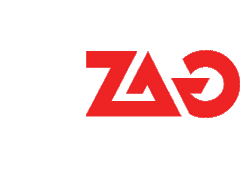
How to Manage an Agency Across Multiple Time Zones
Introduction: Benefits of Distributed Teams
Today more than ever agencies are working remotely. Indeed, agencies everywhere are joining a growing business trend of working with geographically distributed teams as opposed to a centrally located office space in a single location. A recent survey from Ferrazzi Greenlight, for instance, concluded that roughly eighty percent of digital workers reported working on teams that were geographically dispersed1.
One many agencies are giving up brick-and-mortar office space in favor of geographical mobility is clear: it saves money. Remote teams don’t need office space, furniture, utilities, snacks, coffee machines, or water coolers. Taken together, not paying for those items can equal significant savings for an agency. Other monetary benefits arise from the fact that remote workers are far less likely to call in sick, and they can be paid only for productive time2.
The benefits of distributed teams don’t stop there. Hiring managers can also find much better team members when your talent pool is opened internationally. Remote workers also require less of their own transportation costs. And, due to money and time saved there, they’ll have more time and resources to invest in actual agency projects. Overall, there are numerous benefits to working on distributed teams, even when working across borders and different time zones.
Yet there are also important challenges to consider when managing a distributed agency, especially when working across multiple time zones. Here we’ll take a look at some strategies for dealing with issues that arise from distributed teams including project management and issue tracking, messaging and language, meetings and scheduling, along with data.
Overall, working across geographical divisions can seem intimidating. After all, just a few decades ago, such fast-paced collaboration over almost any significant distance was virtually impossible. Today, the landscape is completely different. Here’s how to navigate it.
Distributed Team Challenges
Project management
As a project manager, it’s important to keep track of the different time zone(s) each team member works in. Fortunately, there are a number of tools to help with this task. For instance, Every Time Zone makes it simple to visualize and compare different time zones, which can be crucial for scheduling and many other tasks. Google Calendar can also be configured to show different time zones for making comparisons across local areas. As a project manager, the last thing you want to do is schedule a meeting that ends up being 2am for someone.
Another important measure project managers can take with distributed teams is to use UTC or Coordinated Universal Time for important delivery dates. Attach these times to each issue created in an issue tracking application. This way, your designer doesn’t deliver something a day late because she’s based in New York while the rest of your team is in Sydney. Such functionality is standard in an effective Enterprise Resource Planning (ERP) application, which combines all of these abilities in a single solution.
Meetings
Meetings can be an important way to add some valuable “face time” to what otherwise often amount of text-only relationships. Indeed, one of the important things many distributed teams lack is the ability to read other team members’ emotions. Conducting regular meetings can help address this by allowing specified forums for discussing concerns and ideas that might otherwise be less easy to discuss via email.
Meetings should be scheduled with the time zones of each participant in mind. You don’t want your lead designer falling asleep at an important project kick-off because it’s 11pm in their time zone. An effective ERP will contain multiple time zones to assist with scheduling in different areas.
Meetings should be regular, but not wasteful. Another thing to keep in mind is to make sure meetings are necessary. As a project manager, it is critical to monitor the number of meetings your team is conducting. In businesses overall, wastes in this area lead to an estimated $37 billion per year on unnecessary meetings3.
Messaging and Data
Messaging with colleagues remotely should be done in a manner that is clear and to the point, but also which avoids expressions and language that could be interpreted as harsh or insensitive. When working with team members whose first language is not your own, this can be especially helpful. As a rule, try to slow down and present your ideas step-by-step.
Timing is also important. Be sure to respond promptly, but don’t expect those in other time zones to operate on your schedule. Take advantage of tools that facilitate communication across time zones such as Boomerang, which can schedule non-urgent emails to be sent at a time that doesn’t disturb workers who are off your schedule.
When sharing data, make it actionable and accessible. As CMSWire notes, “Whether using a marketing platform, such as HubSpot, or generating customized reports for each campaign, all data and analysis should be distributed to team members via a comprehensive project management platform like PIVOT and additionally saved in a collaborative document sharing system, such as Google Drive or Dropbox4.”
Conclusion: Challenges and Rewards
It’s important to keep in mind not only the challenges—like issue tracking, messaging and language, meetings and scheduling, and data—but also the benefits agencies stand to gain from distributed working. By using these techniques for dealing with challenges for cross-time zone teams, your agency can reap the financial rewards for distributed working while avoiding some of the most vexing pitfalls.
